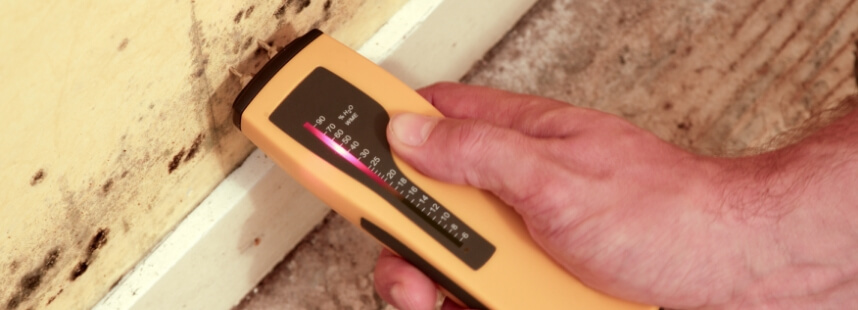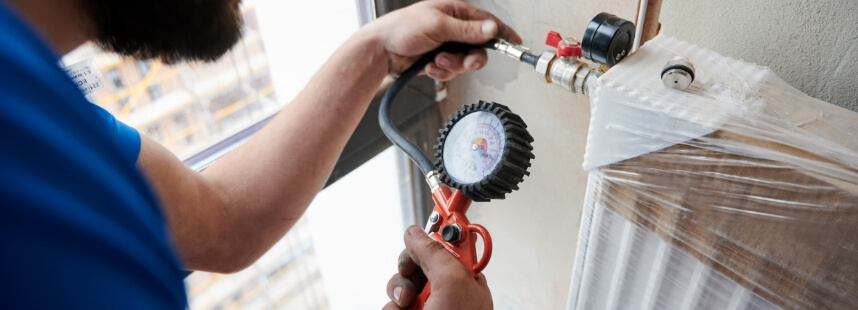The Ideal Range of Humidity Within a Home is Between 35 to 45 Percent.
A dehumidifiers purpose is to lower & control the humidity in the air, thus eliminating odors, providing a more comfortable environment & decreasing the chance of mold growth.
When humidity levels reach 60% and above in a home, mold growth is almost certain as well as other potentially harmful and costly issues. The ideal range of humidity within a home is between 35 to 45 percent. This will also limit populations of most pests including clothes moths, fleas, cockroaches, woodlice, and dust mites.
By their operation, dehumidifiers produce an excess of water which has been removed from the conditioned air. This water, usually called condensate in its liquid form, must be collected and disposed of, unless you’re equipped with a unit that is directly draining into plumbing or a sump pump.

Basements are naturally cooler than the rest of the house, which makes them subject to high humidity. Because the basement floors and walls are in contact with the soil, and soil temperatures several feet below the surface remain at a constant temperature of 50°F – 60°F or less, basement floors and walls tend to remain cool.
BAlso, basements generally do not have many windows, if any, so there is little or no solar heat gain. Because cool air is dense, it is less capable of holding moisture, or water vapor, than warmer air.
BlooWhen the air temperature is cooler, it is not only denser, but also less “active.” Molecules in a less active state are more likely to be solid or liquid than vapor or gas. Therefore, since basements tend to be cool and colder air has less ability to hold gaseous water molecules — basements will have higher relative humidity.
Moisture is the most common problem in basements — either entering from outside sources or being produced inside by the occupants’ activities. The soil around the walls can contain a large amount of moisture from surface water that is seeping down or from a high water table.
Water can find its way inside by gravity or through a crack or flaw in the water protection layer of the foundation. Water can also be pulled up by a “wicking action” or “pushed up” by hydrostatic pressure from the soil under the walls or floor.
Where Moisture Comes From
Air Leaks
Air can leak into the home through walls, roofs, and floors and have damaging effects on a house. Uncontrolled airflow through the envelope of the home not only carries moisture into framing cavities, causing mold and rot, but it can also account for a huge portion of a home’s energy use and can cause indoor air quality problems. In a leaky house, large volumes of air – driven by exhaust fans, stack effect, and the wind – can blow through the floor, walls, and ceiling.

Diffusion Through Materials
This is a process by which vapor spreads or moves through permeable materials caused by a difference in water vapor pressure. An example of this is when the soil becomes saturated and moisture enters the crawl space through the walls by vapor diffusion. Installing a vapor barrier
can help reduce the amount of moisture that makes its way into the crawl space and into the rest of the home.

Internal Moisture
A family of four produces on average two pints of water an hour, or up to 25 pints of water a day, simply by washing dishes, taking showers, cooking, and breathing.
Property Protection
Symptoms of High Humidity:

Every one of these factors contributes to the damage & deterioration of your home property and valuable possessions. And, they all require very little to initiate, survive & thrive — moisture & condensation from high humidity levels for water, & an organic-based material for food (fabric, wood, paper, furniture, etc).
It is no surprise that they are plentiful in humid environments. Cooler surfaces are especially susceptible because the relative humidity will be near 100%. These surfaces may even be visibly wet with condensation. For this reason, the EPA recommends keeping humidity levels below 50%.
These conditions must also be prevented in micro-environments such as underneath carpeting, rugs, or storage boxes. Mold, mildew, pests, and destruction of organic materials can be prevented or minimized in the home through humidity control that maintains reduced relative humidity levels and prevents cooler surfaces from becoming damp.
To avoid the problems caused by moisture, and to create a comfortable, healthy and safe living environment, a dehumidifier is necessary to maintain relative humidity between 45–50% throughout the home.
The Santa Fe dehumidifier removes odor-causing moisture & maintains EPA-recommended relative humidity levels of 45-50% which are ideal conditions for an odor-free storage space or comfortable living space for you and your family.
How Dehumidification Works
In the simplest of terms, dehumidifiers regulate humidity by removing moisture from the air. This creates living spaces that are comfortable to you but inhospitable to dust mites, mold and other allergens.
- First, humid air is pulled into the dehumidifier through the high-efficiency air filter.
- It then passes over the evaporator coil. The cold surface of the evaporator coil combined with the humid air forces water to condense and droplets to form on the coil.
- This water then drops into the drain pan and runs out of the dehumidifier through the drain tube.
- The now cold, dry air passes over the condenser coils and is heated. This warm, dry air is then supplied to the location(s) needing dehumidification.
Why Dehumidification?
Fifty percent of the air in the upper levels of your home come from the basement or crawl space. Both contain high levels of moisture that cause musty odors, mold spores, mildew, bacteria and dust mites. Damp air in these areas may also damage the structure of your home and stored items. According to experts, controlling humidity inside the home is essential for comfort, reduced health risks and property protection.
Our Solutions
We are a proud authorized dealer of Santa Fe dehumidifiers and are able to offer every product with the same great price and guarantees. All Santa Fe dehumidifiers include a 6-year full warranty.
We also offer FREE HOME DELIVERY. Call us today for a free quote on a new Santa Fe Dehumidifier, & keep your home free from excess moisture & mold. You can also learn more & see the difference between each dehumidifier we carry by clicking here: PRODUCT LINE

Disclaimer: Free Delivery is for all customers within our service areas. Deliveries outside our service area will come with fees. Installation & set up requires a proper dedicated outlet & drainage line for the unit, both of which must be supplied by the customer/home owner/landlord. We do not install any electric, or do any plumbing work.
Check your local municipalities for regulations and laws concerning electrical and plumbing needs. Please check with the manufacturer for proper set up as we only deliver these units. We only accept returns 5 days after purchase and there is a $250 restocking fee and some pickup fees may apply.